This week Stuart King, jazz guitarist and composer extraordinaire did a wonderful live online workshop for FretDojo entitled Breaking Out of the ii-V-I: How to Make Your Own Jazz Chord Progressions That Sound Great.
As one participant Karl remarked afterward:
“The workshop was about 3 years of theory explained in little over an hour!”
In the leadup to the workshop, I got a lot of emails from people indicating that they would have loved to attend, but couldn’t due to the time zone differences.
So, for the benefit of all you guys and gals that couldn’t make it, here is the complete replay of the workshop in all it’s glory, along with some notes on the ideas Stuart put forward in his presentation.
How This Workshop Came About
As a bit of background, many of you know I’ve been helping co-produce Stuart’s debut album of original jazz guitar compositions Qualia.
The idea for the workshop came to me in the studio during the final mixing sessions for the album.
What struck me was how interesting and innovative the chord progressions were that Stuart was using in his compositions, so much so I couldn’t help but ask Stuart to reveal all his techniques to the FretDojo community.
Below are some notes on the workshop as well as diagrams of chord shapes you can use to get started with modern jazz chord progressions on guitar.
Without further ado, let’s get into it!
(Hint: fast forward the above video to the relevant timecode to get to the relevant part of the workshop.)
Cycle 5 Harmony and Tritone Substitution (6:00)
Stuart kicked off his presentation with an overview of typical Cycle 5 root movement.
This refers to the traditional movement of the root notes of chords via the interval of a perfect 5th.
A good example of this is a typical ii – V – I progression: e.g Dm7 => G7 => C.
In this case, G is a perfect 5th from D, and C is a perfect 5th from G.
You can manipulate this standard root note movement with tritone substitution, a well-known technique in jazz harmony to create variety and to facilitate smooth voice leading from chord to chord.
Stuart’s opening track on Qualia, Forty One is a good example of this technique in action:
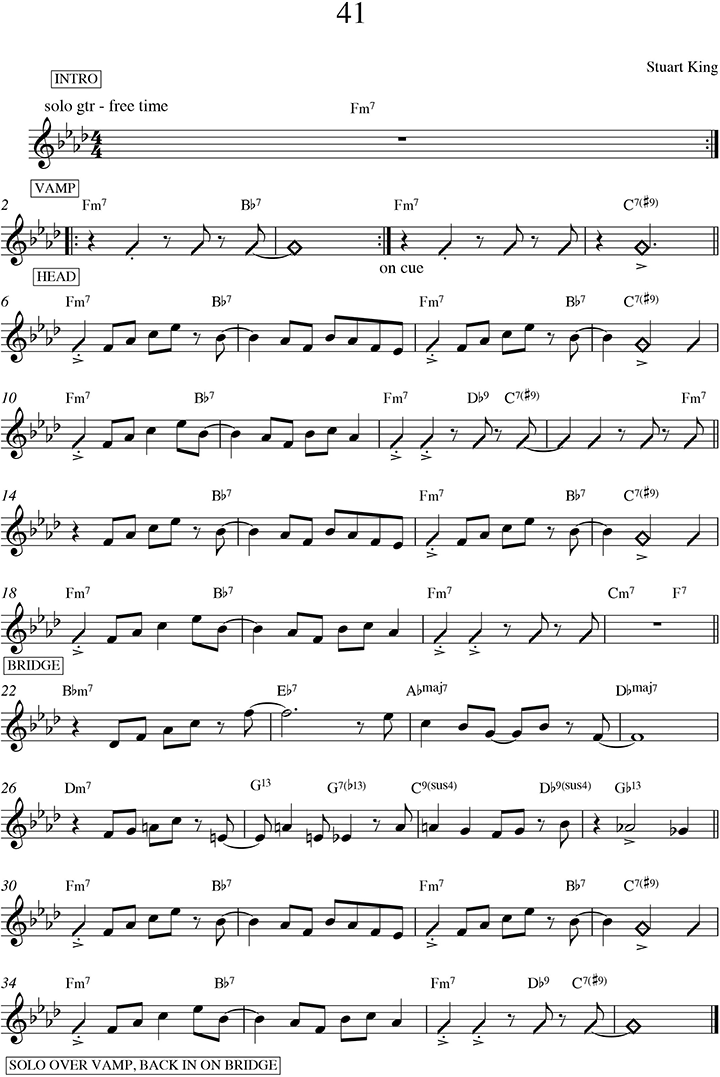
You may ask here:
“So what is a tritone substitution anyway?”
Let me explain.
Have a look at a G7 chord and a Db7 chord, pictured below:
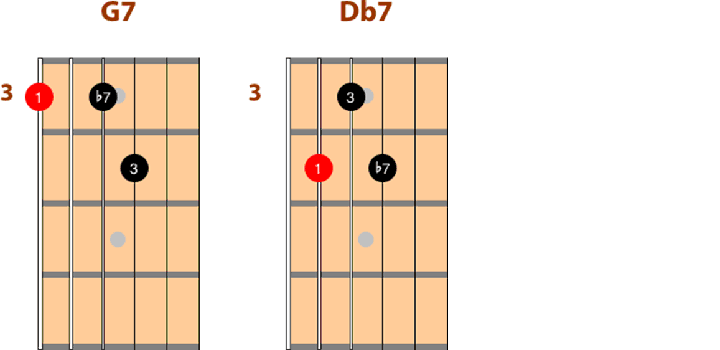
Notice anything similar?
As you can see, these chords share two of the same notes – only the root note has changed.
These two notes are the guide tones – i.e. the 3rd and the 7th. The intervallic distance between them is known as a tritone.
Therefore, as the chords are so similar, they can be used to substitute one another.
Hence the term ‘tritone substitution’ – whereby you substitute one chord with another that has the same tritone.
In bar 12 of Forty One, Stuart uses this technique – substituting a Db9 in place of where you would expect a G7 chord to be:

Although this is a well-known technique, you can play with it in interesting ways.
In the next example, Stuart does the same substitution but also does a tritone substitution on the C7, using a Gb13 chord instead.
Therefore, we now have a cycle 5 root movement off the tritone substitutions, giving us what’s sometimes known as ‘Cycle 5 off the Sub V’s progression’:

For all the nitty gritty detail about everything covered above, check out the workshop video from 6:00 onwards.
Upper Structure Triads (18:48)
To demonstrate upper structure triads, Stuart referred to one of the tracks off Qualia, Great Ocean Road:
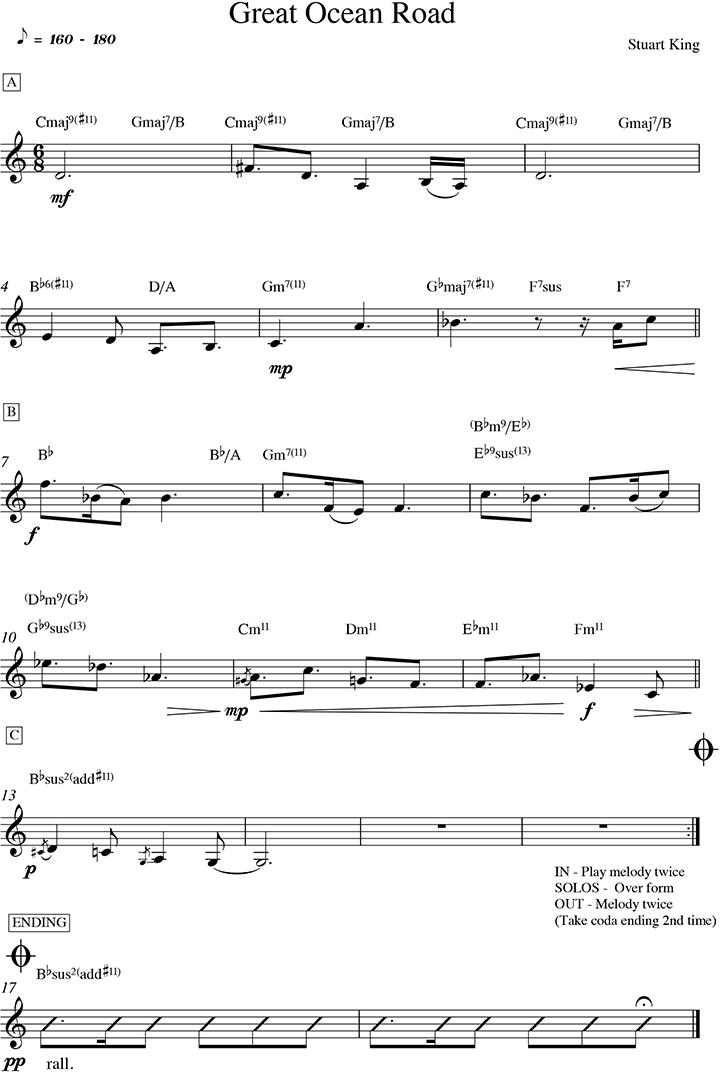
The upper structure triad concept is simple to understand but can give you really interesting chords as a result.
In the following example, you’re going to use the same root note for all the following chord voicings, which then superimpose different triads on top of this static root note.
This results in some colorful, modern sounding voicings you can use in your comping as well as in your compositions:
(Note: the following chords could potentially have other names and functions as well, below is only one way you could label each chord)
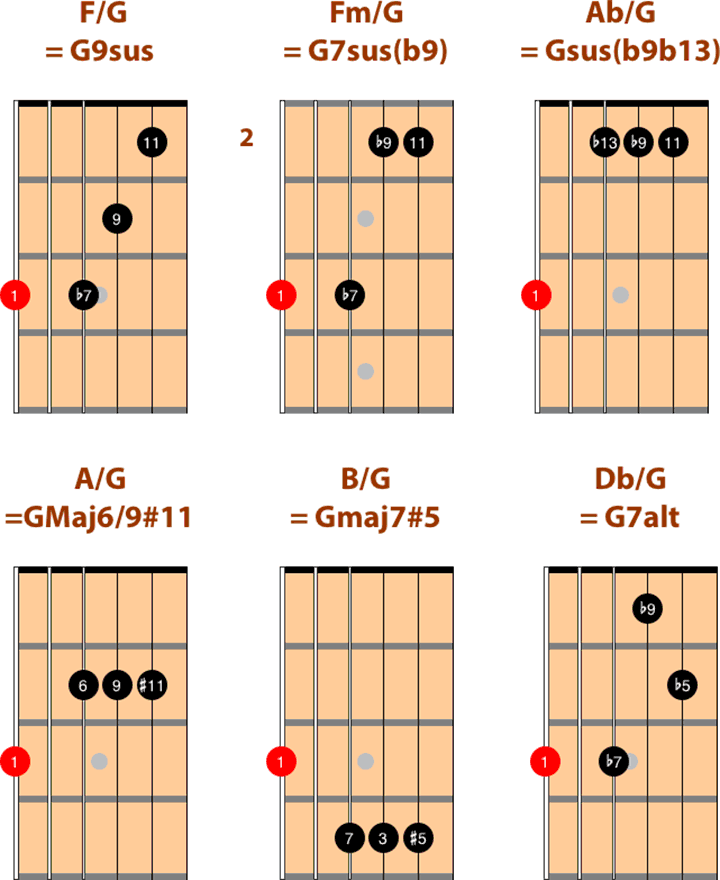
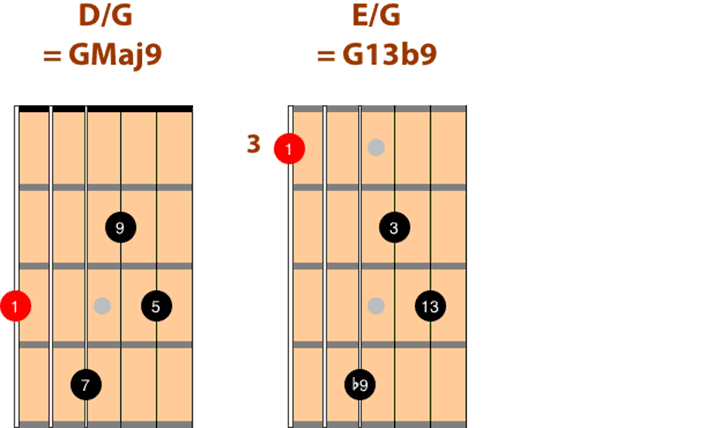
At 22:25 in the video, Stuart then flips this idea on its head.
Rather than keep the root note static and change the upper structure triad, what if you keep the upper structure triad static but change the root note instead?
Great Ocean Road is full of this technique – watch what happens when I replace some of the chord names so that you can see what’s going on more easily:
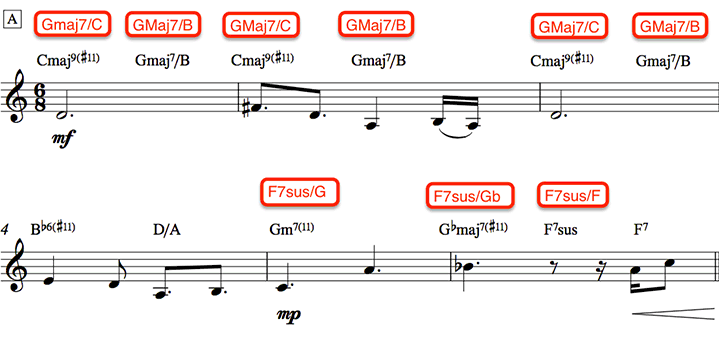
Stuart goes into a lot more detail about the techniques he used on this tune, check out the workshop replay video from 22:25 for more details.
Quartal Harmony (4ths voicings) (30:05)
Quartal harmony is extremely useful for jazz composition and arranging, as well as for comping.
Whilst regular chords are built by stacking 3rds, quartal voicings are built by stacking 4ths.
As quartal voicings are tonally ambiguous, the same shape can be used in many situations and still sound good.
At this point in the workshop, Stuart showed a neat trick of how to find various 4ths voicings, by playing a 4ths voicing chord scale based on E Dorian:

The title track off the album, Qualia, demonstrates the use quartal harmony in action:
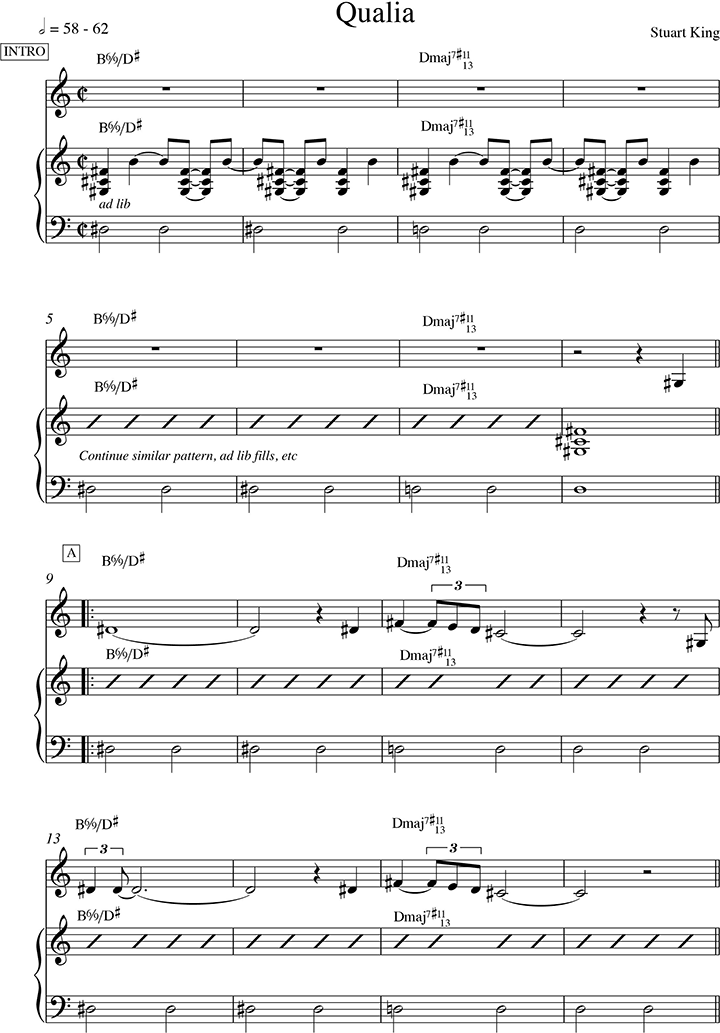
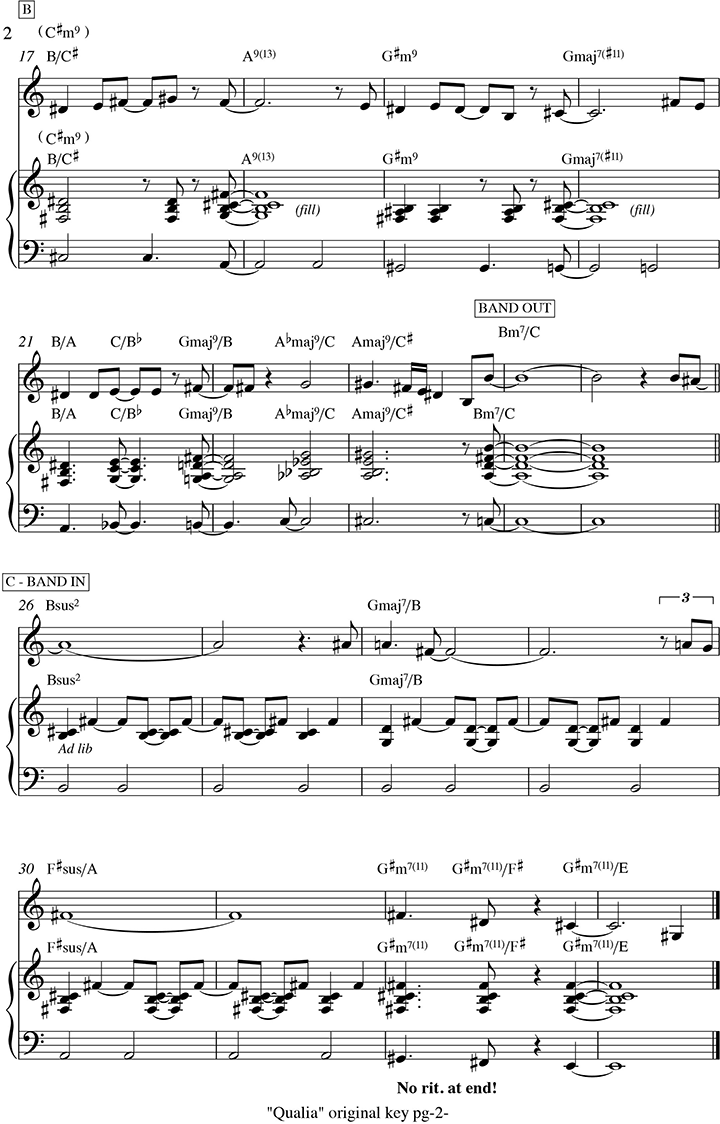
Notice how, early on in the above chart, Stuart also plays with the root note movement to create some very interesting and colorful chords:
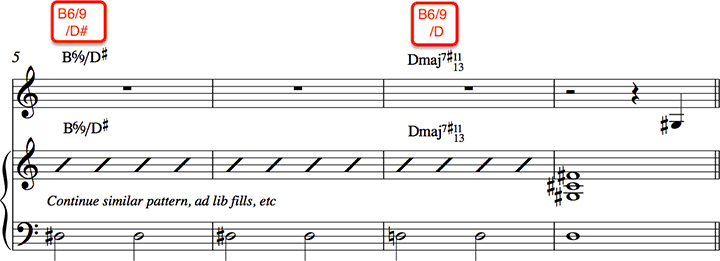
The workshop wrapped up with some interesting questions from participants as well as a couple of performances of the tunes from Qualia by Stuart on solo guitar (see the video from 44:13).
Wrap Up
Special thanks to Stuart King for putting on this fantastic workshop! Hearing the examples directly off his album bought these techniques to life for me, and the participants really enjoyed being a part of the session. I hope to do more of these types of workshops in the future.
Thanks for reading! Did you find this workshop useful? Let us know your thoughts by leaving a comment below…
Greg O’Rourke, BMus (Hons), ANU
About Stuart King:

Stuart is a guitarist with over 20 years experience as a performer in many varied contexts, ranging from classical through to contemporary styles, musical theater, and jazz.
In 2005 Stuart graduated from the Canberra School of Music, Australian National University with a Bachelor of Music as a jazz performance major.
These days Stuart performs regularly around Canberra as a band leader, sideman, session guitarist and solo jazz and acoustic guitarist.
Stuart has performed with the Canberra Symphony Orchestra on various occasions and has performed with many notable Australian jazz musicians including Mike Price, Ben Hauptmann, Carl Dewhurst, Lucinda Peters, and Luke Sweeting.
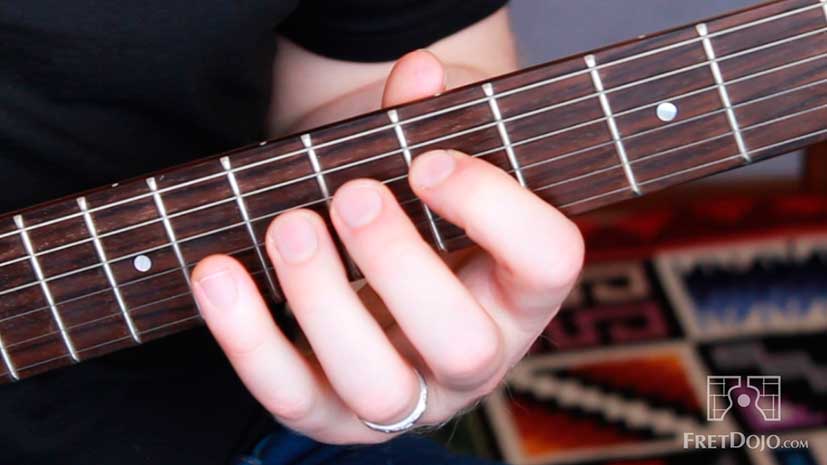
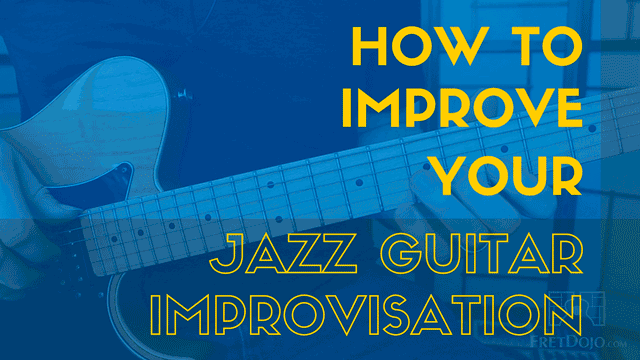
Thanks for making this great workshop available to those of us who couldn’t make it to the live stream. One question: isn’t it more accurate to describe a ii-V-I progression or iii-vi-ii-V-I progression as Cycle 4 rather than Cycle 5 root movement as each chord in the progression moves anti-clockwise in 4ths around the circle of 5ths rather than clockwise in 5ths?
THANK YOU THANK YOU THANK YOU!!! Fantastic workshop.
Ciao from Italy.
This is a great follow up. I now know that the song I’m writing is an example of superimposing different triads on top of this static root note. My challenge will be to identify the actual chord names!
(BTW – tell Stuart – love the new “CD”.)
Thank you so much guys. Useful, informative, inspiring & lots to play around with. Very much appreciated.
Our pleasure Laurie, great to hear you found this one useful.